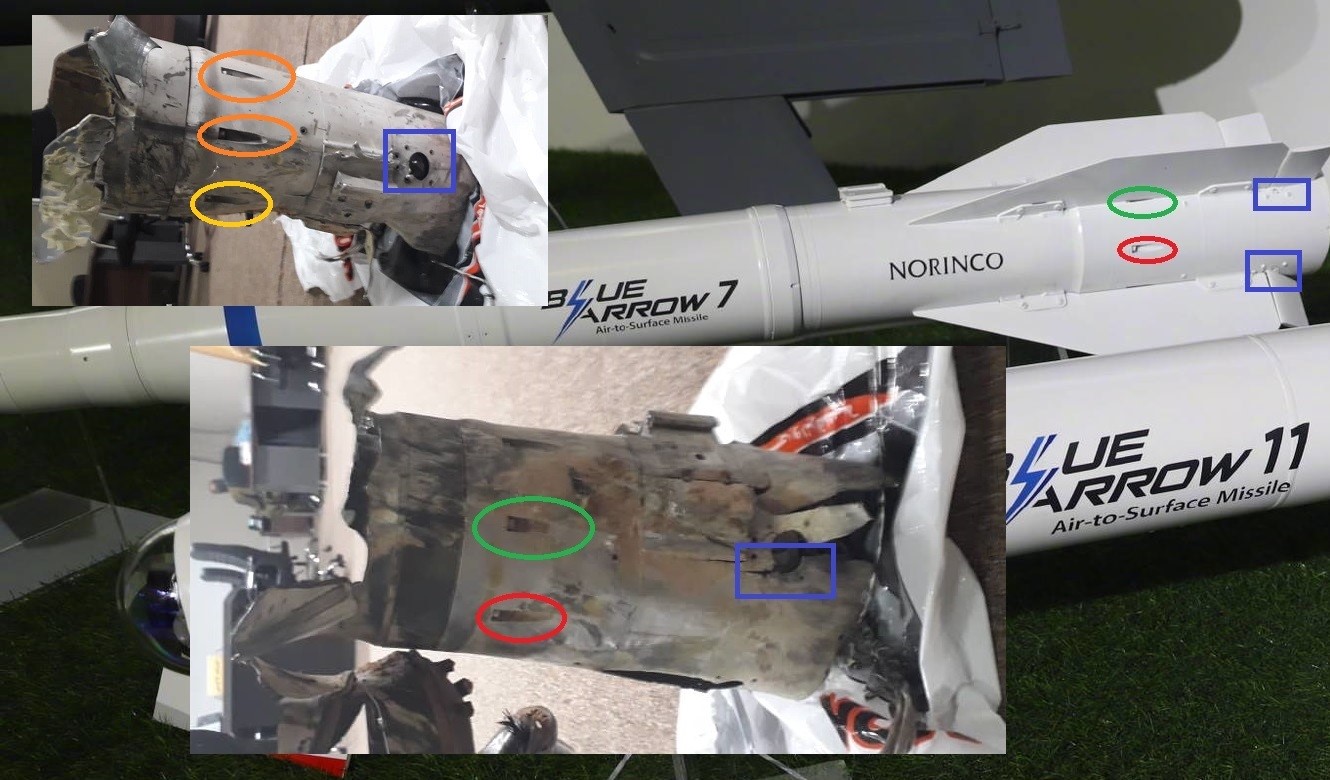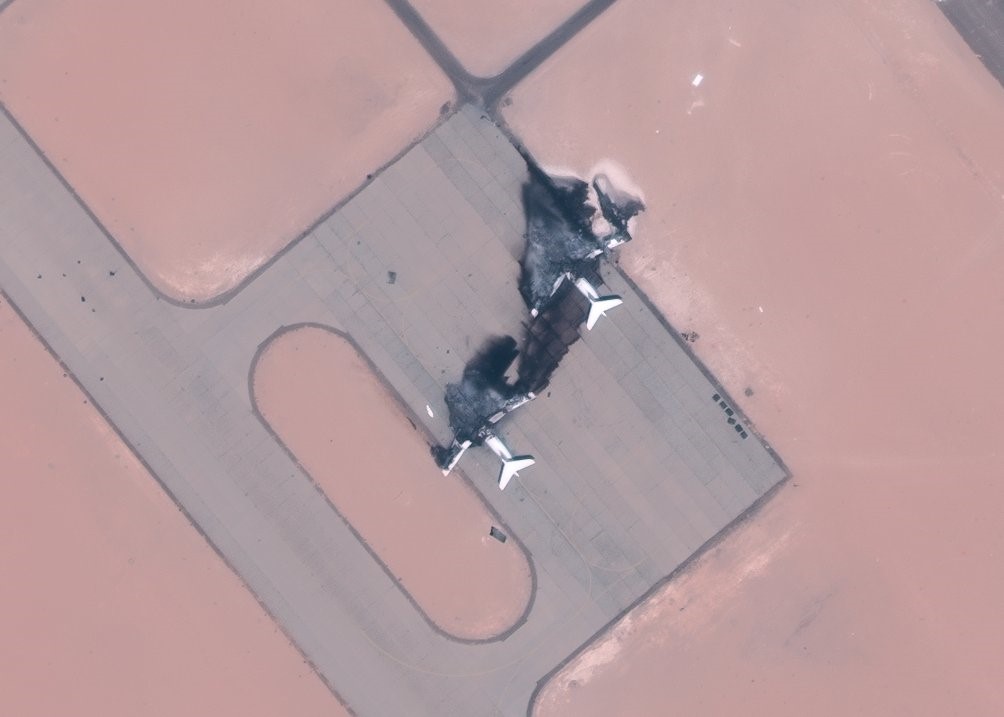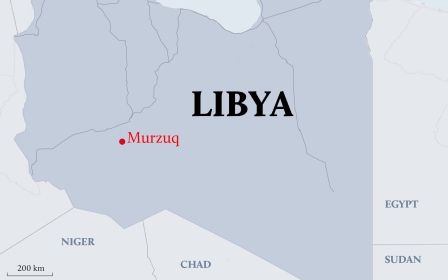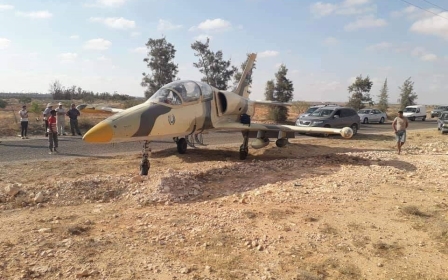How Libya's skies became battleground for UAE-Turkey proxy war
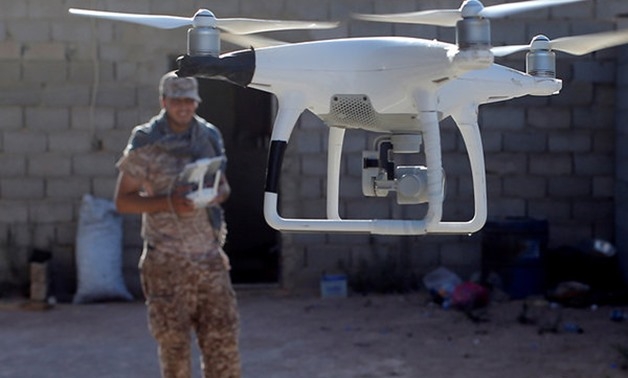
From the moment Khalifa Haftar launched his offensive on Tripoli in April, the Libyan commander called on air power to back his fighters on the ground.
To supplement his self-styled Libyan National Army (LNA) - a group of militias rotating around a regular army nucleus of about 25,000 men – Haftar has used about 15 aircraft and a few gunships and transport helicopters.
New MEE newsletter: Jerusalem Dispatch
Sign up to get the latest insights and analysis on Israel-Palestine, alongside Turkey Unpacked and other MEE newsletters
In the Libyan capital, the UN-backed Government of National Accord has relied on a similar number of fighter jets, and the first weeks of Haftar’s offensive saw intensive air strikes from both sides.
The air power commanded by the warring parties may sound impressive, but they are in fact as rag-tag as the ground forces they back. Soon, the aircraft's age became apparent as the LNA lost a Russian-made MiG-21MF and the GNA two French Mirage F1AD/EDs.
With no new aircraft readily available, mechanics on both sides have stayed busy attempting to keep the ageing fleets operational.
Not wanting to be left without air power, however, Haftar and the GNA appear to have turned to another type of craft: drones.
Enter the drones
Two weeks after the first fighting, rumours of night bombing carried out by drones were reported by civilians and GNA-affiliated militias.
In late April the first hard evidence of drone use began to emerge. Images of Blue Arrow 7 missile fragments began to circulate following raids on Wadi Rabe, al-Hira, al-Azizia and Ain Zara.
Also known as the LJ-7, the Blue Arrow 7 is a Chinese-made anti-tank guided missile manufactured for the export market.
The Blue Arrow 7 missile is suitable for use on Wing Loong 2 unmanned aerial vehicles, and has previously and noticeably been combined in eastern Libya by the United Arab Emirates, one of Haftar’s chief backers.
Since June 2016 the UAE has kept a fleet of Chinese-made Wing Loong crafts in the al-Khadim air base in eastern al-Marj province, alongside other attack aircraft.
The small Emirati fleet was engaged in air strike and reconnaissance missions in support of the LNA as Haftar’s forces fought militants in Benghazi in 2016, and in Derna in 2018.
Now, the UAE’s aircraft are being used to back its ally Haftar in his Tripoli campaign.
Turkish supplies
In response to the UAE’s drone support for LNA ground forces, the GNA ordered four Bayraktar TB2s from the Turkish government.
Sources have told Middle East Eye the Turkish aircraft were probably delivered to Tripoli’s port on 18 May onboard the Amazon cargo ship, and were distributed between the Misrata and Mitiga air bases.
The GNA’s forces, however, did not possess the experience or technical know-how to operate the drones, so Turkish operators had been deployed to Libya to fly them.
The move has put Turkish citizens at risk. When a pro-LNA raid, most likely carried out by the UAE, hit Mitiga air base on 6 June, two Turkish operators were reportedly wounded, while a Beechcraft King Air utility plane and two Bayraktar TB2s were destroyed.
Rather than proving a deterrent, the Mitiga raid only prompted further Turkish investment, and the GNA ordered eight more armed drones from Turkey, the majority of which are now stored in Misrata.
Proxy war in the sky
The first month of the Tripoli offensive saw intensive use of warplanes by both sides. However, the fighter jets’ age caught up with them, and most of the fleets’ planes are now grounded for maintenance.
Unmanned aerial vehicles (UAV) have since replaced the warplanes, with the Libyan skies witnessing something akin to a proxy drone war between the UAE and Turkey.
It is a conflict that has at times become direct, as the drones have destroyed Emirati and Turkish assets. Three Ilyushin Il-76TDs transport cargo aircraft were destroyed in Turkish UAV air strikes on al-Jufrah and Misrata.
Meanwhile, an Emirati Wing Loong crashed in attempting to reach Misrata, probably after being jammed by a Turkish anti-UAVs system.
Air bases have become primary targets for armed drones, and retaliatory strikes have escalated between the two sides in recent weeks, with UAVs hitting bases far from the fighting in western Libya.
Turkish Bayraktar UAVs do not have the range to hit Benina, the LNA’s most significant air base.
However, they could reach the oil terminals held by Haftar if Turkey uses the Ghardabiya air base in southern Sirte.
On the other side, the UAE’s Wing Loongs can reach easily any Turkish/GNA infrastructure in Libya, and their capabilities would only increase if the UAE establishes a new military base in Niger near the border with Libya.
A cooling of fighting on the Tripoli front around the Eid holiday earlier this month allowed Haftar to focus on southern Libya and the region around Murzuk, where drone strikes killed at least 45 people on 4 August.
The acquisition of armed drones has enabled the two protagonists to overcome their lack of air power and precision strikes in urban areas.
Libya appears to have become a laboratory where foreign countries can test new types of air power with almost no intervention of manned aircraft by the two belligerents.
The proliferation of this type of planes - Chinese-made Wing Loongs, Tukishes Bayraktar TB2s, Israeli-made Orbiter-3 tactical drones - engaged in reconnaissance, guiding and striking operations in and around Tripoli confirms this.
Foreign drones are particularly useful for the Libyan belligerents. They require much less maintenance than the warplanes both sides possess, and hence can make sorties far more regularly.
But they also allow the LNA and GNA to sidestep a simmering problem: pilots have a history of being reticent to conduct strikes on fellow Libyans.
Since 2011, when the Libyan conflict began with an uprising against longtime autocrat Muammar Gaddafi, there have been several instances of fighter pilots defecting or refusing missions.
Sources recently told MEE that some GNA pilots based in Misrata were hesitant to carry out recent attacks.
There are several indications that an LNA pilot’s surprise landing in Tunisia last month was in fact a desertion. He reportedly told Tunisian authorities he was fleeing the war before touching down, and as an experienced pilot would have likely been able to overcome the technical difficulties cited in the aftermath.
The GNA has in recent years attempted to solve this issue by recruiting mercenaries into its air force. Foreign-provided drones, however, may now have replaced them.
This article is available in French on Middle East Eye French edition.
Middle East Eye delivers independent and unrivalled coverage and analysis of the Middle East, North Africa and beyond. To learn more about republishing this content and the associated fees, please fill out this form. More about MEE can be found here.



